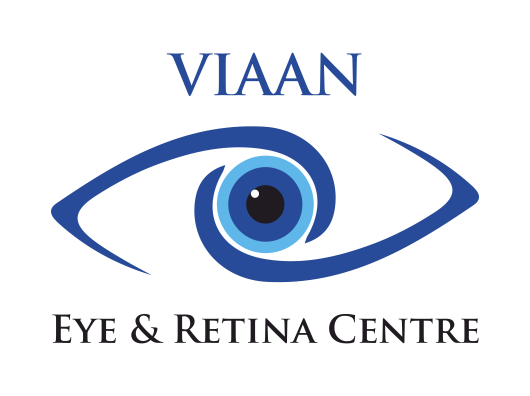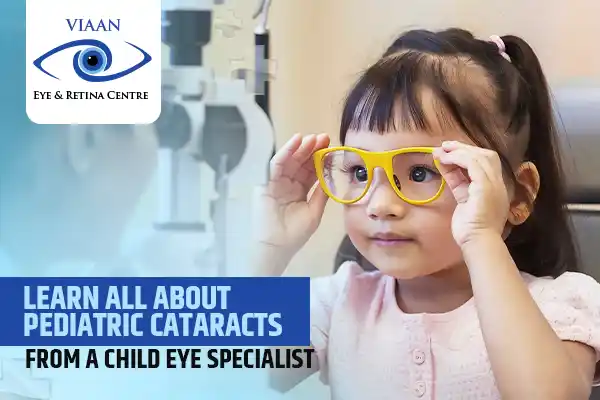Childhood cataracts, while less common than in adults, are significant for children’s vision. Congenital cataracts contribute to an estimated 5% to 20% of childhood blindness globally, with the incidence varying across different countries. These cloudy areas in the eye’s lens can occur from birth or early infancy, affecting one or both eyes. Early detection and intervention, with the help of a child eye specialist like Dr. Neeraj Sanduja, are crucial for optimal outcomes.
Recognizing childhood cataracts is vital for parents and caregivers, as they impact a child’s visual development. Prompt intervention, guided by a child eye specialist, ensures the best chance of preserving vision and preventing developmental delays.
Pediatric Cataracts: Understanding the Basics
Pediatric cataracts, characterized by cloudy areas in a child’s eye lens, differ from those in adults by their early onset, potentially from birth. They can affect one or both eyes, varying in severity. Early detection and intervention are vital, guided by a Child Eye Specialist is necessary to ensure optimal outcomes.
While less prevalent than in adults, childhood cataracts significantly contribute to global childhood blindness, estimated at 5% to 20%. Timely detection is paramount to prevent irreversible vision loss and developmental complications. Regular screenings by experts such as Dr. Neeraj Sanduja facilitate effective management, preserving children’s vision and well-being.
Causes of Pediatric Cataracts
Pediatric cataracts can arise from a variety of factors that a child eye specialist can diagnose and make the parents or the primary care-givers aware of. Some of them are:
- Genetic Predisposition: Certain genetic mutations can predispose children to cataracts from birth, impacting the development of the eye lens.
- Intrauterine Infections: Infections contracted during pregnancy, such as rubella, toxoplasmosis, and herpes simplex, can lead to pediatric cataracts, highlighting the importance of prenatal care.
- Trauma: Physical trauma to the eye can also result in pediatric cataracts, disrupting the normal structure and function of the lens.
- Metabolic Disorders: Less commonly, metabolic disorders like galactosemia can disrupt metabolic processes, contributing to the development of cataracts in children.
- Systemic Diseases: Certain systemic diseases such as diabetes, Wilson’s disease, or hypocalcemia can also be associated with pediatric cataracts, affecting overall health and eye development.
Understanding the diverse causes of pediatric cataracts is essential for timely diagnosis and appropriate management. Consultation with a Child Eye Specialist Dr. Neeraj Sanduja at Viaan Eye and Retina Centre ensures timely care and effective treatment.
Identifying the Symptoms of Pediatric Cataracts (for parents)
Pediatric cataracts can present with various symptoms that parents should be vigilant about. Early detection is key, as prompt intervention by a child eye specialist can significantly impact a child’s visual development and overall well-being.
– Cloudy or Blurry Vision: Children with cataracts may experience blurred or cloudy vision, hindering their ability to see clearly.
– Sensitivity to Light: Increased sensitivity to light, also known as photophobia, can be a sign of pediatric cataracts, causing discomfort in bright environments.
– Abnormal Eye Movements: Children with cataracts may exhibit abnormal eye movements, such as nystagmus or strabismus, as their eyes try to compensate for visual impairment.
Regular eye exams by a child eye specialist are crucial for detecting cataracts early, even in infants who may not yet be able to communicate vision problems. Specialists like Dr. Neeraj Sanduja at Viaan Eye and Retina Centre can perform comprehensive assessments to identify cataracts and initiate appropriate management promptly.
Treatment Options for Pediatric Cataracts
The management of pediatric cataracts differs significantly from adults due to the anatomical differences and continuous growth of ocular tissues. Close monitoring and non-surgical interventions like pharmacological dilation and part-time occlusion therapy may be employed by a child eye specialist to initially assess the child’s visual development.
Surgery is not always immediately necessary, but regular follow-up appointments with a child eye specialist are crucial to prevent amblyopia and other associated complications.
In cases where surgical intervention is required, the timing varies depending on factors such as the density of the cataract and whether it is unilateral or bilateral. For dense unilateral cataracts, surgery is typically recommended as early as possible, ideally between 4-6 years of age, to prevent irreversible vision loss and promote optimal visual development. Bilateral dense cataracts usually necessitate surgery within the first few months of life, with procedures spaced one week apart to optimize visual outcomes.
The surgical procedure involves removing the cloudy lens and, if necessary, implanting an intraocular lens (IOL) to restore clear vision. Consulting with a child eye specialist like Dr. Neeraj Sanduja at Viaan Eye and Retina Centre ensures comprehensive care tailored to each child’s unique needs and circumstances.
Seeking Guidance from a Child Eye Specialist
Your child’s vision is precious, and as a parent, your instincts are invaluable. If you have any concerns about your child’s vision or suspect they may have cataracts, remember that you are not alone on this journey. Consulting a child eye specialist like Dr. Neeraj Sanduja at Viaan Eye and Retina Centre can provide the guidance and support you need to clarify any doubts and go through any uncertainties with confidence.
At Viaan Eye and Retina Centre, the team of doctors headed by Dr. Neeraj Sanduja understands the unique challenges of pediatric eye care and is dedicated to ensuring the best possible outcomes for your child. With expertise in diagnosing and managing pediatric cataracts, Dr. Sanduja offers personalized care tailored to your child’s individual needs and circumstances.
It’s natural to have questions or concerns, but remember that early consultation with a reputable child eye specialist is the key. By seeking timely medical attention, you empower yourself to take proactive steps towards preserving your child’s vision and overall well-being. Together with Viaan Eye and Retina Centre, you can ensure hope and optimism, knowing that you are doing everything possible to ensure a bright and vibrant future for your child.
Your child’s vision is worth every effort, and with the support of a compassionate and skilled specialist like Dr. Neeraj Sanduja, you can face any challenge with strength and resilience.




